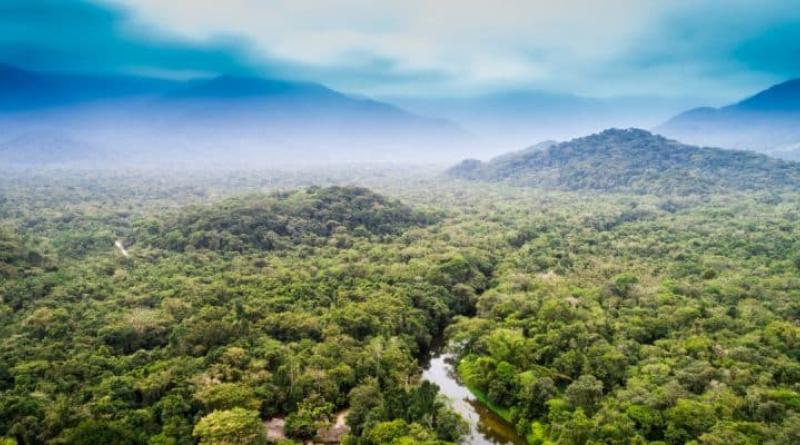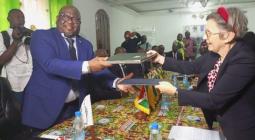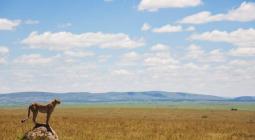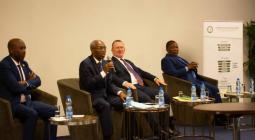CENTRAL AFRICA: what funding for the Congo Basin forests?

The Summit for a "New Global Financial Deal" is being held on 22 and 23 June 2023 in Paris, the capital of France. Among the nearly 100 heads of state and government expected to attend the summit, Central African leaders are expected to focus on the funding needed to protect the forests of the Congo Basin. The world's second largest green lung has been left out of international financial flows for the protection and sustainable management of tropical forests.
Spanning six countries (Cameroon, Central African Republic, Democratic Republic of Congo, Congo, Equatorial Guinea and Gabon), the Congo Basin provides vital services for both humans and the planet. According to the World Wild Fund (WWF), it has fed and provided shelter for 75 million people for over fifty thousand years. These forests, which are home to a range of animal species including forest elephants, lowland gorillas, chimpanzees and bonobos, also play an essential role in regulating the planet’s climate.
According to estimates by the Center for Global Development (CGD), the Congo Basin forest, which covers a total area of 298 million hectares, absorbs around 600 megatonnes of CO2 every year (1 megatonne = 1 million tonnes). In terms of carbon credits, this corresponds to 30 billion US dollars per year, based on the social value of carbon estimated at 50 dollars per tonne in 2020 by the US Interagency Working Group on the Social Cost of Greenhouse Gases (GHGs).
In its 2021 report on the state of the Congo Basin Forests, the Observatoire des forêts d’Afrique centrale (OFAC) states that “… undisturbed forests in Africa are now absorbing more carbon than those in the Amazon”.
Yet the tropical forests of Central Africa receive far less funding than those of Amazonia and South-East Asia. Studies carried out by the Collective of Environment Ministers and Researchers for the Defence of the Congo Basin reveal that between 2008 and 2017, the Congo Basin received only 11% of international financial flows intended for the protection and sustainable management of tropical forests, compared with 55% for South-East Asia and 34% for Amazonia.
Even at continental level, funding for biodiversity continues to discriminate against the Congo Basin. In 2015, the Future Climate for Africa (FCFA) invested US$27 million in pan-African modelling and four projects focusing on East, West and Southern Africa. Nothing in the Congo Basin or Central Africa.
Apart from their marginal nature, funding for biodiversity in Central Africa is far below the amounts needed. OFAC estimates that around 200 million dollars are needed to implement the priority actions of the Convergence Plan of the Central African Forest Commission (COMIFAC), between 2021 and 2025.
At the 15th United Nations Conference on Biodiversity (COP15), held in Egypt in December 2022, the countries of Africa, Brazil, India and Indonesia expressed their financial needs to reverse the global loss of biodiversity: protect 30% of land and sea, halve the use of pesticides, restore 20 or 30% of degraded land, and so on. They are calling on the rich countries to provide financial subsidies of at least 100 billion dollars a year, or 1% of the world’s gross domestic product (GDP) until 2030, i.e. around ten times the amount of aid currently provided, and as much as has been promised for the fight against global warming. Developing countries would like to receive these subsidies via a new global fund for biodiversity.
Insufficient data to support decision-making
One of the reasons for the low level of funding for biodiversity in Central Africa is the lack of knowledge of the terrain. While recent data from Comifac suggests that the tropical forests of the Congo Basin are more carbon-dense and more effective at slowing climate change and resisting its effects than Amazonian rainforests, it still does not explain how increasing droughts, higher temperatures, selective logging and deforestation might interact in the region.
The same applies to the quantities of carbon stored in vegetation and soils. At present, most Central African countries are relying on default values, which could turn out to be very wrong.
And yet these and other quantities of stored carbon must be declared, in accordance with the commitments made by countries under the 2015 Paris Climate Agreement.
To fill this gap in scientific data on the forests of the Congo Basin, the Collective of Environment Ministers and Researchers for the Defence of the Congo Basin is calling for a $100 million research programme to be set up. “This would create a new generation of scientists, including future leaders in Central Africa. The training programme would ensure the radical change needed in scientific capacity and provide opportunities for young African researchers who currently find it difficult to compete for international grants, which are often won by students from Asia or South America”, explains the collective in an article published on Jeune Afrique.
The main financiers of biodiversity in Central Africa
Although the funds allocated to biodiversity in Central Africa are still largely insufficient, the flows available are mainly from mixed financing, public-private partnerships (PPPs) and private initiatives such as the African Development Bank (AfDB), the World Bank, the French Development Agency (AFD), the Global Environment Facility (GEF), the Eco.Business Fund, the Fund for Trade and Investment in Agriculture in Africa (initiated by Germany), the Livelihoods Fund, the Moringa Partnership and the Althelia Climate Fund.
International initiatives such as AFR100 (the African Forest Landscape Restoration Initiative, aimed at restoring 100 million hectares of deforested and degraded landscapes in Africa by 2030) and, above all, REDD+ (reducing emissions from deforestation and forest degradation, combined with sustainable forest management, conservation and enhancement of forest carbon stocks), also count towards mobilising funds for Central Africa’s forests.
According to OFAC, nearly 200 million dollars were mobilised between 2016 and 2020 to finance REDD+ activities in the Democratic Republic of Congo (DRC). In the joint declaration of the 26th United Nations Climate Conference (COP26) held in November 2021 in Glasgow, Scotland, twelve of the world’s richest countries and the Bezos Earth Fund set the minimum amount to be mobilised for the protection and sustainable management of the Congo Basin forests at 1.5 billion dollars.
Financing models
Gabon is one of the Central African countries that receives the most funding for biodiversity, compared with the rest of the countries in the sub-region. With almost 88% forest cover, Gabon is promoting green diplomacy, the effectiveness of which is reflected in the funding obtained on the carbon market. In 2019, Norway has pledged to pay Gabon $150 million to protect its forests as part of the Central African Forest Initiative (CAFI).
Long before this funding, the country underwent an independent audit of its deforestation rates in 2016 and 2017. The conclusive results of this study – a deforestation rate of around 0.1% per year – enabled Gabon to obtain an initial payment of $17 million under the REDD+ initiative, becoming the first African country to be paid to protect its forests.
To capitalise on the climate and ecosystem services provided by its forests, Gabon has proposed a new model for financing biodiversity. Biodiversity credits”, a certified unit held by a country or a project for its contribution to preserving natural resources. “We’re going to start working on a biodiversity credit system like carbon credits. The Congo Basin is the heart and lungs of Africa, and it helps to keep our continent stable. Surely we can put a price on this service and put a value on this equatorial forest,” explains Lee White, Gabon’s Minister of Water and Forests.
While waiting for “biodiversity credits” to be examined and, if possible, validated by the Convention on Biological Diversity (CBD, or Rio Convention), several other models for financing biodiversity are available, although it is often difficult to develop financially viable models that are likely to convince banks of the stakes involved in biodiversity.
In the litany of solutions applied, green bonds have been one of the main innovative financing mechanisms for biodiversity in recent years.
Read also-Debt, climate emergency… A summit in Paris to redefine the global financial pact
The African Wildlife Capital (AWC) fund has played a pioneering role in this field, by applying a rebate on bond interest that is proportional to the achievement of quantifiable conservation objectives. However, this market faces a number of limitations, including the difficulty of translating the value of ecosystem services into financial terms, and the scarcity of conservation projects likely to be financed by such investments, which leads to a mismatch between the limited size of the projects and the minimum amount of a bond issue. According to Tine Fisker Henriksen, head of innovative financing at the Bertha Centre for Social Innovation (University of Cape Town in South Africa) and Wassa Cissé, investment analyst at Bestseller Found, only 5 to 10% of the proceeds of green bonds have been allocated to biodiversity to date.
The countries of the Congo Basin can also use the “debt for nature” swap, which consists of cancelling the debt of a developing country in exchange for a commitment by the latter to invest the same amount in conservation. Little used in Africa, with the exception of the Seychelles, this mechanism is currently being implemented in Ecuador. Advised by the Lazare Bank, on 9 May 2023 Quito obtained a reduction in its debt in exchange for its commitment to finance the conservation of the Galapagos Islands, an archipelago listed as a World Heritage Site because of its biodiversity. The debt reduction is equivalent to a total of 450 million dollars over 18 years.
Investors have agreed to sell $656 million worth of bonds for fear that the country’s financial and political situation will deteriorate further. Others agreed to acquire them despite the risks, on condition that the operation served to protect the Galapagos, and thanks to financial guarantees from the Inter-American Development Bank (IDB) and the US development agency Development Finance Corporation (DFC).





